AEG-Electrolux SG455BKN, SG455WN, SG455WL, SG455BKL User Manual

S G 4 5 5
Contents |
Page |
Lighting the appliance |
4 |
|
|
The grill |
7 |
|
|
The hotplate |
11 |
|
|
The ovens |
14 |
|
|
Oven cooking chart - main oven |
17 |
|
|
- second oven |
20 |
|
|
The electronic timer |
23 |
|
|
Slow cooking |
27 |
|
|
Care and cleaning |
29 |
|
|
Installing the appliance |
36 |
|
|
General information |
38 |
|
|
What is wrong and why? |
40 |
|
|
Servicing |
42 |
|
|
Installation Instructions |
44 |
|
|
Technical Data |
45 |
|
|
Safety requirements/ventilation |
46 |
|
|
Location of appliance |
47 |
|
|
Installation |
48 |
|
|
Testing |
50 |
|
|
Guarantee conditions |
53 |
|
|
3
Contents
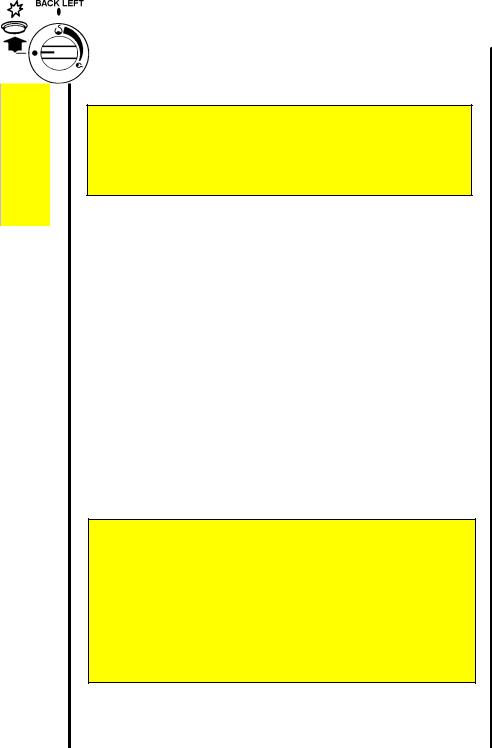
Lighting the appliance
S G 4 5 5
Lighting the appliance
The ignition system works by means of an electric spark system. Details about the plug are given in 'General Information'.
For your safety
In the event of the burner flames being accidentally extinguished, turn off the burner control and do not attempt to re-ignite the burner for at least 1 min.
Hotplate
To light:
1Lift up the lid. You cannot use the hotplate when the lid is down.
2Push in and hold the control knob, turn to the large flame symbol (highest setting) and press the ignition button immediately. Keep the control knob depressed for up to 5 seconds, but no longer than 10 seconds. After this time release the controls. The flame should remain alight. If after 10 seconds the burner has not lit, stop operating the appliance and wait at least 1 min before attempting a further ignition of the burner.
Warning: If the ignition button is not pressed immediately a build up of gas may cause the flame to spread.
For your safety
If you close the lid of the appliance while any of the hotplate burners are lit the gas will go out. This is because it would be dangerous if the burners stayed on when the lid was closed.
Always use the control knob to turn off a burner. Do not use the lid as a cut-off device. This will only cut off the gas when the lid is closed. The gas will flow again when the lid is opened.
Please note: If you have any trouble lighting a hotplate burner turn all the hotplate control knobs off. Make sure that the burner parts have been replaced correctly.
4
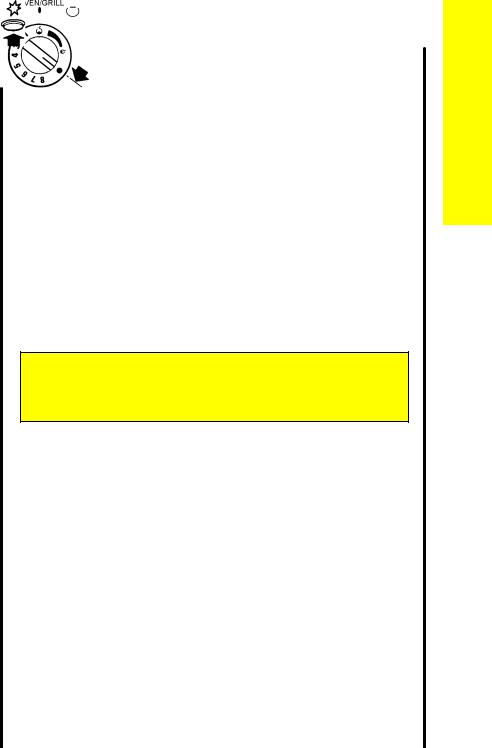
S G 4 5 5
Grill/second oven
The grill and the second oven are operated by the same control so you cannot use them both at the same time.
Grill
To light:
1Open the door.
2Push in the control knob and turn it to the right to the large flame symbol (highest setting). After a few seconds the grill will light automatically. When the burner has lit release the control.
3Leave the grill door open when you are using the grill.
Warning: If the ignition button is not pressed immediately a build up of gas may cause the flame to spread from the grill cavity.
For your safety
Never cover the grill pan or grid with foil as this can lead to grill fires.
Second oven
To light:
1Open the oven door.
2Push in the control knob and turn it to the left to gas mark 1, and press the ignition button immediately. When the burner has lit release the button. There will only be small flames at first.
3Now turn the control
knob to the gas mark you want.
4Wait until the burner is showing large flames.
5Close the oven door.
Important: Remember to remove the grill pan handle before you use the second oven.
5
Lighting the appliance
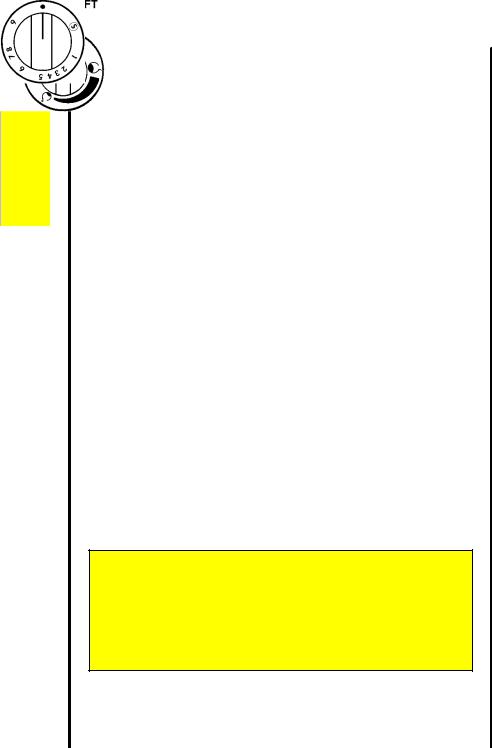
Lighting the appliance
S G 4 5 5
Main oven
To light:
1Set the time of day on the clock.
2Open the oven door.
3Push in the control knob and turn it to gas mark 9. After a few seconds the oven will light automatically and the oven light will illuminate. There will only be small flames at first.
4Now turn the control knob to the gas mark you want.
5Wait until the burner is showing large flames.
6Close the oven door.
If there is an electrical power failure (such as a power cut) you cannot use the main oven. You can use the second oven.
To turn off any burner
1Push in the control knob and turn it to the off position. This is shown by a large dot.
For your safety
When you are lighting any burner check that it has lit before you leave the appliance.
When you are turning off a burner, do not leave the appliance until the flame has gone out.
Oven light
The main oven light will come on when the oven burner is alight. If you need to replace the oven light bulb, follow the instructions in 'General Information'.
6
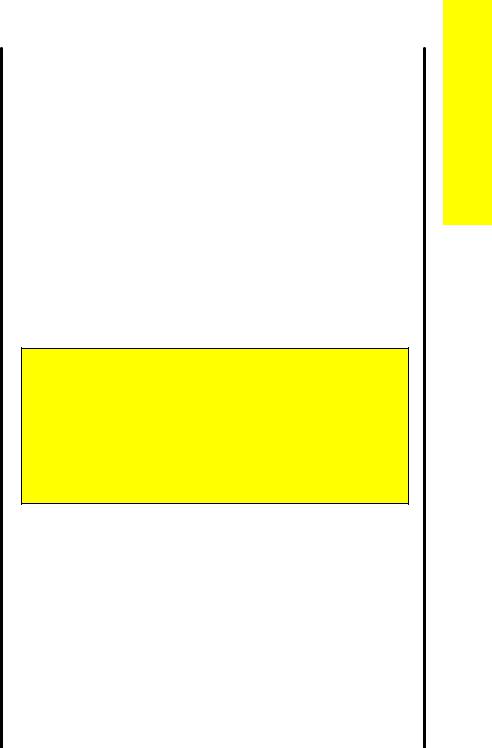
S G 4 5 5
The grill
The grill is a high-speed grill. The instructions below tell you how to vary the heat setting and how to change the height of the grid to suit the food you are cooking. You should remember to turn the food regularly.
You should not use the grill to keep food warm as it will continue to cook the food.
Prior to using the grill
We suggest that you operate the grill for approximately 5 - 10 mins to burn off any residue from the surface. During this period a slight odour may be emitted, it is therefore advisable to open a window for ventilation.
When you first operate the grill you may hear some sounds as the burner heats up, this is quite normal and is not a fault on the appliance.
/
For your safety
The grill pan and handle must be in place before igniting the grill. You must keep the grill door open when the grill burner is lit. Accessible parts may be hot when the grill is used. Young children should be kept away.
Never cover the grill pan or grid with foil as this can lead to grill fires.
Heat control
The grill control has two heat settings.
The control knob turns to the right from 'OFF' to 'LOW' and then to 'HIGH'. Use the high setting for fast cooking such as toast. Use the low setting to cook thicker food such as chicken after you have browned it on the high setting.
7
The grill
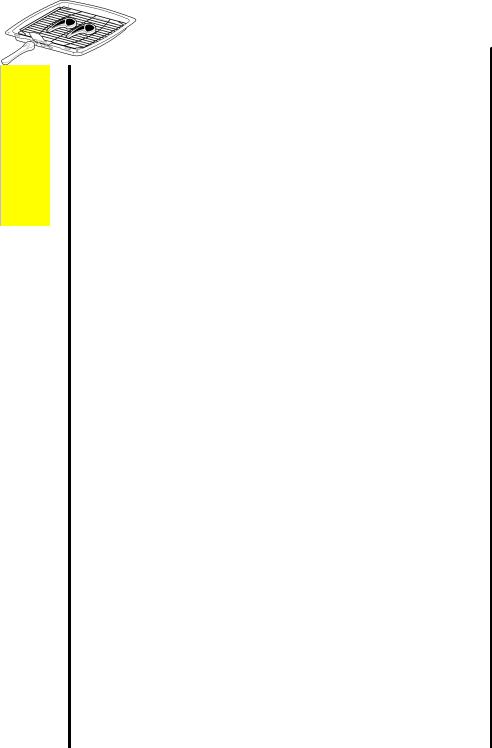
The grill
S G 4 5 5
Cooking positions
There is only one position for the grill shelf (Position 2). Positions are counted from the top downwards.
Most food should be cooked on the grid in the grill pan. You can turn the grid over to suit different thicknesses of food.
You can place some dishes straight on to the grill shelf. This is useful when you are browning the top of food such as cauliflower cheese.
General
The shelf in the grill/second oven is different from the shelves in the main oven. It is important that you do not swap them over. Only use the shelf with the solid metal plate underneath it in the grill/second oven.
When you are not using the grill you should remove the handle and store the pan on the shelf in the grill. Turn the grill burner off before you store the pan. Remember that the pan will get hot when you are using the main oven.
You can use the grill compartment to warm plates when you are using the main oven.
Preheating
You don't usually need to preheat the grill. You may wish to preheat it for a couple of minutes when you are cooking steak or browning food.
Putting food on the grid
Place food such as toast, tea-cakes and muffins towards the centre of the grid.
Place food which needs a gentle heat, such as tomatoes and mushrooms towards the edge of the grid.
Arrange meat, meat products and fish to suit their thickness and how you like them cooked.
8
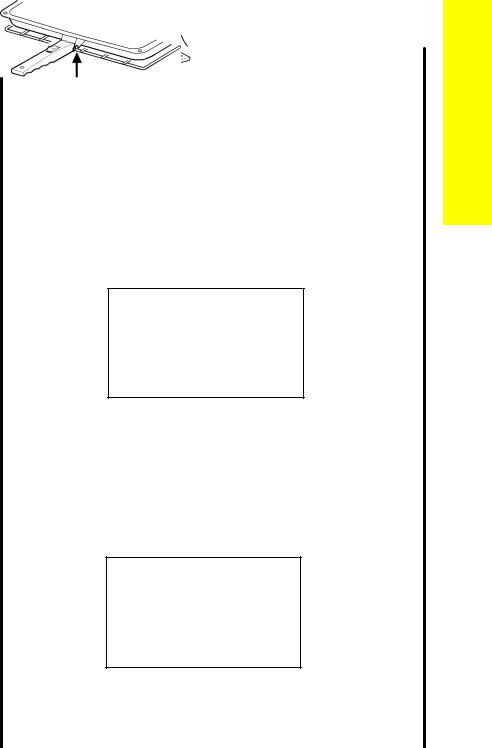
S G 4 5 5
The grill pan and handle (NG models only)
The grill pan is supplied with a removable handle.
To insert the handle, press the button on the handle with the thumb and pivot the handle slightly upwards inserting the lip into the widest part of the bracket. Move the handle towards the left, lower into position and release the button.
Ensure the handle is positively located.
When removing the handle, press the button on the handle with the thumb and pivot the handle slightly upwards and towards the right to remove from the bracket.
Ensure your hand is protected when removing the grill pan handle as the grill element can become very hot.
ALWAYS REMOVE THE GRILL PAN HANDLE DURING COOKING.
To correctly locate the grill pan on the shelf, ensure that the cut out on the underside of the handle bracket locates over the front bar of the shelf.
To check the progress of the food being grilled, the grill pan should be withdrawn on the shelf to attend to food during cooking.
9
The grill
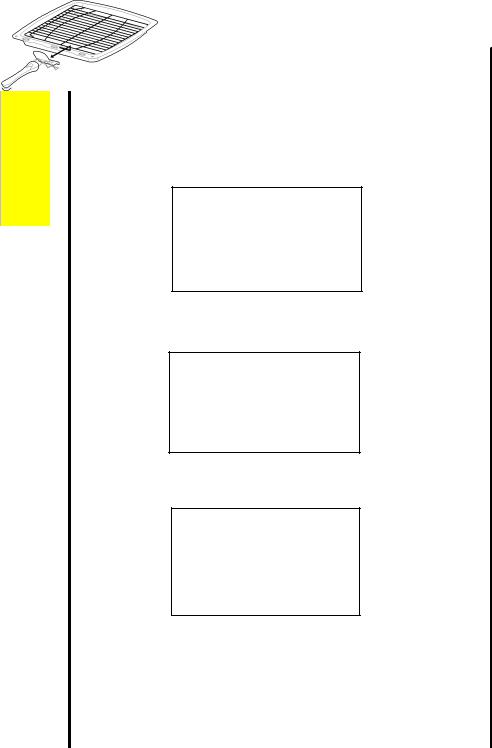
The grill
S G 4 5 5
The grill pan and handle(LPG models only)
The grill pan is supplied with a removable handle.
To attach the handle, place the wirework under the cut out in the pan so that the metal plate hooks over the top of the grill pan.
Slide the handle to the left and over the central bump on the grill pan.
Ensure the handle is correctly located. It is not necessary to remove the grill pan handle during grilling.
Place the grill pan on the shelf so that the pan is positioned centrally beneath the grill.
To remove the handle, slide the handle to the right and lift the handle away from the cut out on the grill pan.
Note
If you require an additional handle for your grill pan, this can be ordered from your local Service Force Centre by quoting part number 311479800\6.
10
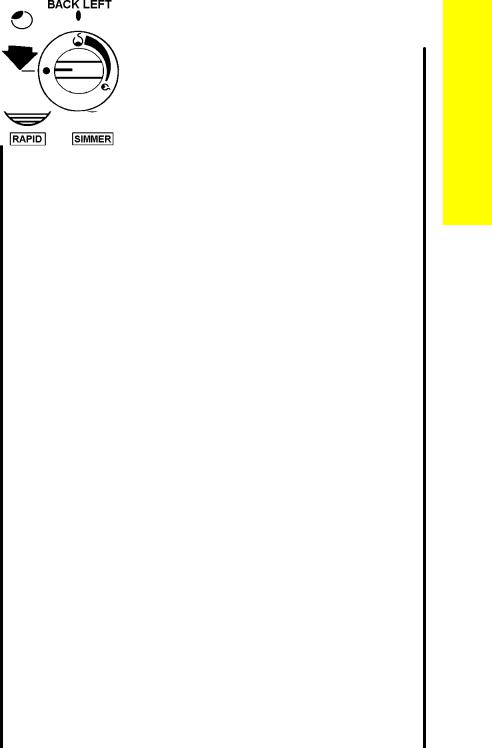
S G 4 5 5
The hotplate
You can only use the hotplate when the lid is open. If you have any trouble lighting a hotplate burner, turn all hotplate control knobs off and make sure that the burner parts have been replaced correctly. Now light the burner in the usual way.
Heat control
The hotplate control knobs turn anticlockwise from 'OFF' to 'HIGH' and then to 'LOW'. You can adjust the heat by turning the control between the highest and lowest settings. These are shown as a large and a small flame symbol.
Burner sizes
The hotplate has three burner sizes to suit different types of cooking:
Largest burner (Rapid) - use a large pan for food such as chips.
Medium burners (Normal) - use for everyday cooking.
Small burner (Simmer) - use for simmering food such as soups and stews.
The largest pan which you should use on any burner is 230mm (9"). The base of the smallest pan should not measure less than 100mm (4").
Lift pans on and off the pan supports. Do not slide them across the hob.
11
The hotplate
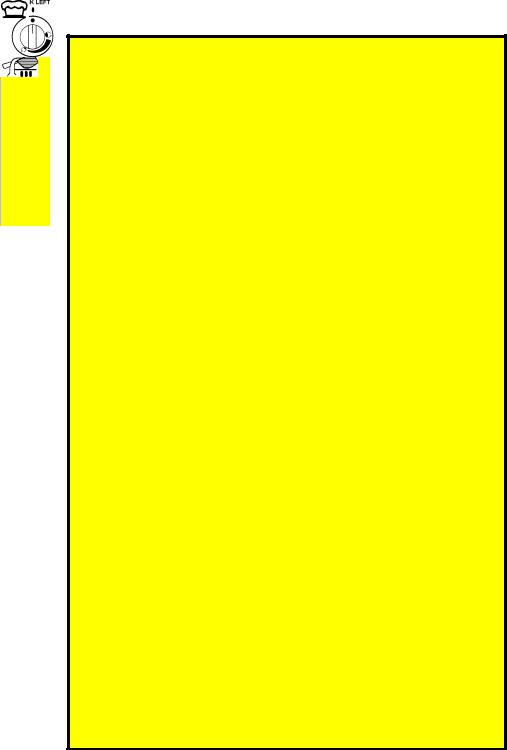
The hotplate
S G 4 5 5
For your safety
1Take care to avoid burns and scalds when you are reaching across the hotplate.
2Use pans with flat bases. They are more stable than pans which are warped.
3Do not use pans with very heavy handles which cause the pan to tip.
Put pans on the centre of the burners.
5Position pan handles so they cannot be accidentally knocked.
6Take extra care when you are deep fat frying. Do not cover the pan with a lid.
|
Do not leave a pan unattended. If the pan catches fire, |
|
leave it where it is and turn off all controls. |
|
Place a damp cloth or a fitting lid over the pan to |
|
smother the flames. |
|
Never put water on the fire. |
|
Leave the pan to cool for 30 minutes. |
7 |
If you are using a Wok we recommend it has a flat base |
|
as it will stand stable on the pan supports. If you use a |
|
round based Wok with a collar support, the collar must |
be of the open wire work type. A closed collar will affect the performance of the burner. Before you use the Wok make sure that the collar is stable on the pan supports. Always follow the instructions that come with the Wok.
8Do not use the lid as a work surface or chopping board. this could damage the glass and reduce its strength.
12

S G 4 5 5
Helpful hints
1Keep flames under the base of the pans. If the flames lick round the sides of the pans you are wasting gas.
2Only heat the amount of liquid you need. Do not overfill pans.
3Cover pans with a lid whenever possible. The food will heat up more quickly and there will be less steam in the kitchen.
4Try cooking more than one vegetable in the same pan, for example potatoes and carrots.
5Cut vegetables into smaller pieces. This way they will cook more quickly.
6A pressure cooker will save time and energy.
13
The hotplate
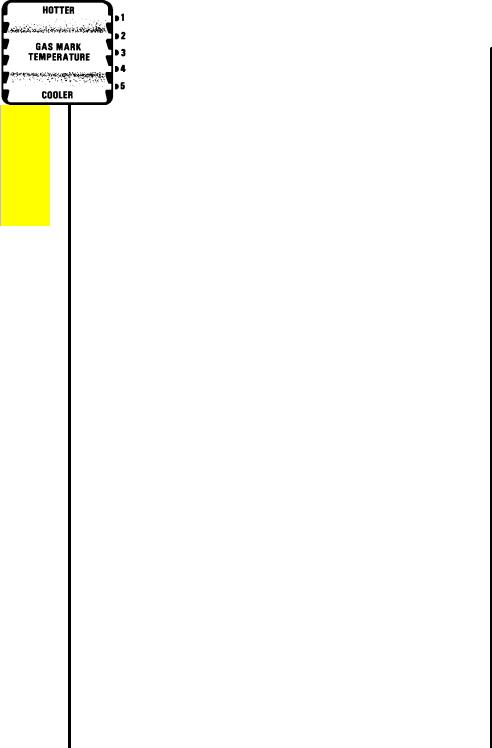
The ovens
S G 4 5 5
The ovens
Before you use the ovens you should wipe them out with a damp cloth. This will remove any dust.
Heat zones
Main oven - There are zones of heat within the oven. The temperature in the middle is the gas mark you have chosen. The top of the oven is slightly hotter and the lower shelf slightly cooler. The base of the oven is quite a lot cooler. You can make use of these heat zones when you are cooking foods that need different temperatures all at the same time.
If you are cooking more than one tray of similar items, for example cakes or biscuits, swap the trays around during cooking. Or you can remove the top tray when the food is cooked and move the lower tray to the higher shelf to finish cooking.
Second oven - You should turn food round during the cooking time.
Preheating
You do not need to preheat the main or second oven for casseroling and so on.
Preheat the ovens for baking or when you are cooking sensitive food such as Yorkshire puddings, soufflés and yeast mixtures.
When you are cooking or reheating frozen or chilled food read the instructions on the packaging. When you are using the second oven to reheat food you should preheat the oven to gas mark 8.
When you need to preheat the oven, we recommend you do so for 20 minutes.
Oven shelves
You can slot the oven shelves into any of five positions in the main oven and any of the two positions in the second oven. Positions are counted from the top downwards.
The shelf in the grill/second oven is different from the shelves in the main oven. Only use the shelf with the solid metal plate underneath it in the grill/second oven. The plate may glow red when you are using the oven. This will not affect the cooking performance.
14
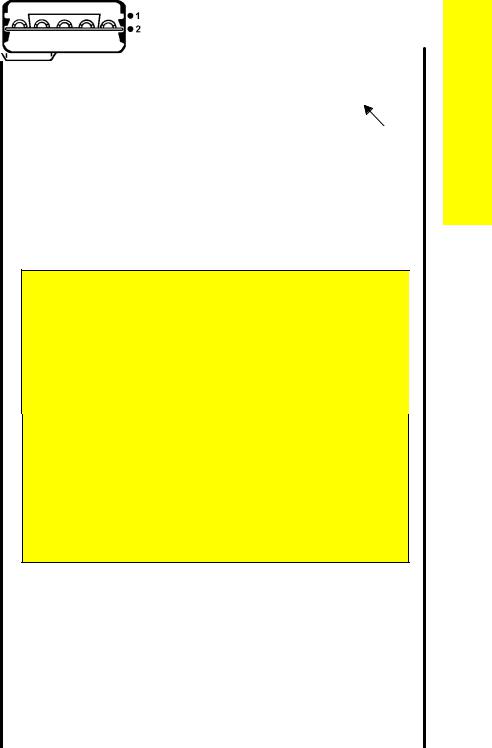
S G 4 5 5
Most second oven cooking should be carried out using the shelf provided in shelf position 2. However, when cooking a small joint or a deep cake you can use the shelf on the base of the second oven to allow enough air to circulate around the food.
For safety the shelf will only pull out so far. If you want to remove a shelf completely, pull it forward as far as it will go, raise the front edge and lift it out. To put the shelf into a different position, keep the front edge raised, slot the shelf on to the runner, lower the front edge and slide the shelf in.
Baking trays and dishes
For your safety
Never place cooking dishes, trays and so on over the oven burners. This will damage the appliance as well as the cookware and possibly the floor covering underneath the appliance.
Leavegapgap of 13mm (½") all Leave of 13mm (½") betwbetweenall dishes
dishes and the sides of the oven so and the sides of the oven so the heat can
the heat can circulate properly. circulate properly.
Do notDopushnot pudishesdishestoo fartoobackfar basckfoodas will burnfoodif it overhangswill burn theif itburnoverhangsflames.the
burner flames.
For the best results from the main oven we recommend that you use a baking tray which is 310mm (12") square. If you use a tray or tin which is larger than this, you may need to turn it around during cooking.
The size of tray which you should use in the second oven should not measure any bigger than 310mm x 230mm (12" x 9" ). Place the longest side parallel with the door.
Place single dishes on the centre of the shelf. You may need to turn large items around during cooking. Turn all food round in the second oven.
15
The ovens

The ovens
S G 4 5 5
Roasting
For best results we recommend open roasting using minimal fat or oil to prevent splashing.
It is not necessary to cover meat or poultry or wrap food in foil when roasting as this restricts the circulation of heat and will lead to extended cooktimes.
If you use a roasting bag or cover chicken breast with foil, be prepared to allow an extra 10 - 15 minutes for each 1/2kg (1lb).
When cooking large items such as turkeys, the use of foil may be required to prevent the breast becoming dry before the rest of the bird is fully cooked.
Condensation
Condensation may form on the appliance. This is quite normal and nothing to worry about. The condensation forms when heat and moisture are present, for example during cooking. Whenever possible try to make sure that food which contains a lot of moisture, for example casseroles, are covered. If you do notice any condensation, wipe it up straight away.
16
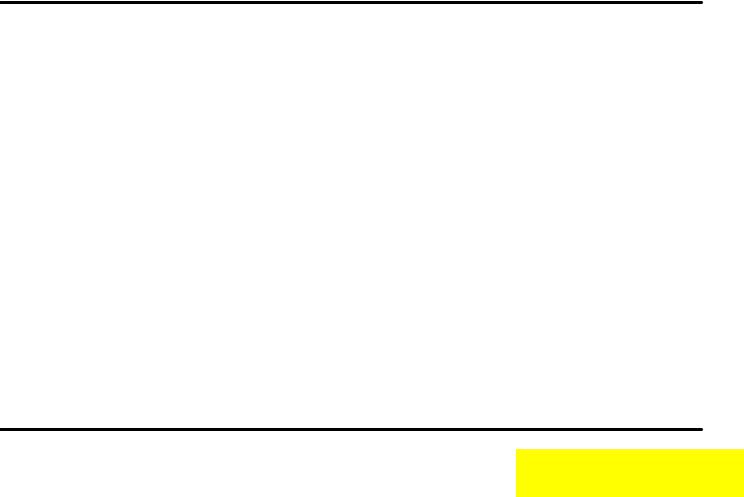
17
Oven cooking chart - Main oven
These instructions are for cooking in the oven after it has been pre-heated for 20 minutes.
If you are cooking more than one tray of similar items, for example cakes or biscuits, swap the trays around during cooking. Or you can take the top tray out of the oven when the food is cooked and move the lower tray to the higher shelf to finish cooking.
Always leave at least one shelf position between shelves to allow heat to circulate. |
|
|
|||||
The recommended shelf positions give the best results. |
|
|
|
|
|||
Put the dishes in the centre of the shelf. |
|
|
|
|
|
||
You can change the gas marks and cooking times to suit your own tastes. |
|
|
|
||||
It is important to check that food is piping hot before serving. |
|
|
|
|
|||
If you are using both ovens at the same time you may need to adjust the cooking times. |
|
G S |
|||||
|
|
|
|
|
|
|
|
|
|
|
|
|
|
|
|
|
|
|
Gas |
Shelf |
Approximate |
4 |
|
|
Food |
|
mark |
position |
cooking time |
5 |
|
|
|
|
5 |
||||
|
|
|
|
|
|
|
|
|
Roasting meat: |
Beef |
5 |
4 |
Rare: |
20 mins. per ½kg (1lb) and 20 mins. |
|
|
|
|
|
|
Medium: |
25 mins. per ½kg (1lb) and 25 mins. |
|
|
|
|
|
|
Well Done: |
30 mins. per ½kg (1lb) and 30 mins. |
|
|
|
Lamb |
5 |
4 |
Medium: |
25 mins. per ½kg (1lb) and 25 mins. |
|
|
|
|
|
|
Well Done: |
30 mins. per ½kg (1lb) and 30 mins. |
|
|
|
Pork and Veal |
5 |
4 |
Medium: |
30 mins. per ½kg (1lb) and 30 mins. |
|
|
|
|
|
|
Well Done: |
35 mins. per ½kg (1lb) and 35 mins. |
|
|
|
|
|
|
|
|
|
Thaw frozen joints thoroughly before cooking them.
Oven cooking chart
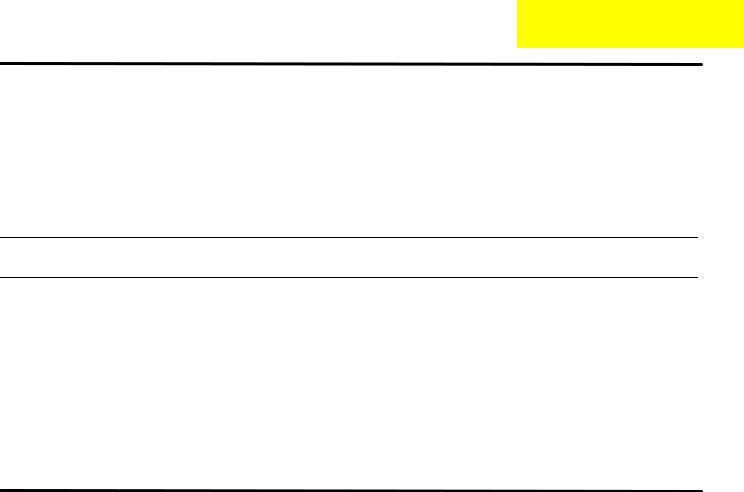
Oven cooking chart
18
|
|
Gas |
Shelf |
Approximate |
Food |
|
mark |
position |
cooking time |
|
|
|
|
|
Poultry: |
Chicken |
5 |
4 |
20 mins. per ½kg (1lb) and 20 mins. |
|
Turkey below 4.5kg (10lbs) |
4 |
4 |
25 mins. per ½kg (1lb) and 25 mins. |
|
over 4.5kg (10lbs) |
4 |
4 or 5 |
15 mins. per ½kg (1lb) and 15 mins. |
|
Duck and duckling |
5 |
4 |
25 mins. per ½kg (1lb) |
|
Stuffed poultry |
Cook as above but calculate weight including stuffing. |
||
|
|
|
|
|
Thoroughly thaw frozen joints before cooking them.
The times given above are for open roasting in a preheated oven. If you cover the food with foil or a lid allow an extra 10 - 15 minutes for each ½kg (1lb).
Yorkshire pudding |
- large |
|
7 |
2 |
25-30 mins. |
|
- individual |
7 |
2 |
15-25 mins. |
|
|
|
|
|
|
|
Cakes: |
Christmas cake (8") |
2 |
4 |
4-5 hours |
|
|
Rich fruit, |
180mm (7") |
2 |
4 |
2¼-2¾hours |
|
|
205mm (8") |
2 |
4 |
2½-2¾ hours |
|
Madeira, |
180mm (7") |
4 |
4 |
1 hour |
|
Small cakes |
5 |
2 & 4 |
15-25 mins. |
|
|
Scones |
|
7 |
2 & 4 |
10-20 mins. |
|
Victoria sandwich |
|
|
|
|
|
180mm (7") |
4 |
2 & 4 |
20-30 mins. |
|
|
205mm (8") |
4 |
2 & 4 |
20-35 mins. |
|
|
|
|
|
|
|
5 5 4 G S
